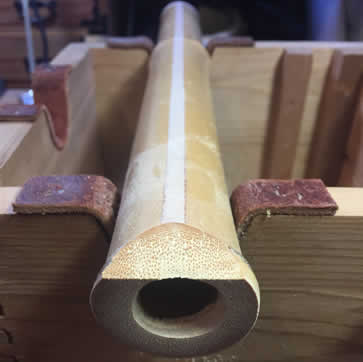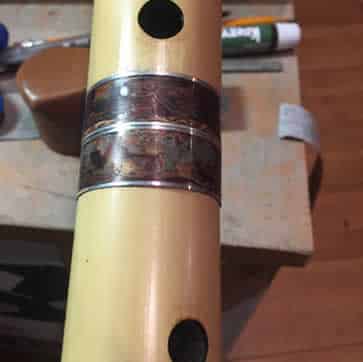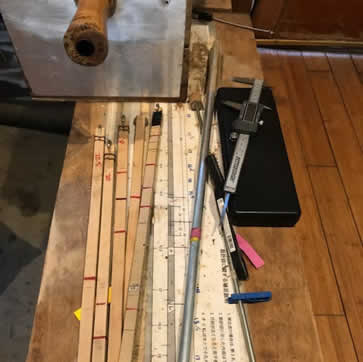Growing or Sourcing the Bamboo
Any good shakuhachi flute starts with high-quality bamboo. Shakuhachi makers generally grow the bamboo themselves, but it can also be sourced from bamboo growers in some cases. The best flutes will always be made with the highest quality bamboo. Growing quality bamboo requires the right environment. And, for shakuhachi flutes, you need to use the male stalks of traditional Japanese madake bamboo.
Harvesting
Once the bamboo is grown, it needs to be properly harvested. The harvesting process is generally done in the winter when insects are less populated, and the bamboo is in good condition. The bamboo should be gathered from areas with rich soil rather than a marshy floor. The bamboo must be carefully selected, so only the best stalks are harvested. And, if you want to know how to make a shakuhachi flute, you have to start by ensuring your bamboo is adequately sourced and harvested.
Drying and Curing
After the harvesting is complete, the next step is to dry and cure the bamboo stalks. Fresh green bamboo is more likely to crack and break. So drying and curing it until it becomes stronger is an essential part of making a shakuhachi bamboo flute. The first step is to cook the bamboo to dry it out gently. Then, once it has turned a gray color, you can expose it to the weather outside to complete the process and sun bleach the exterior.
Straightening
Throughout the growing process, some stalks of bamboo may become bent. If you are wondering how to make a shakuhachi flute from bent stalks, it is vital to note that they must be appropriately straightened out before turning them into flutes. When the bamboo is heated, it becomes flexible, which allows you to straighten it out.
Utaguchi
Many people wonder how to make a Japanese shakuhachi flute make a sound. And to do this, you need a kind of resonator. This resonator is called the utaguchi and must be added to the flute during the process to be able to translate the air you blow into the flute into sound. Generally, the utaguchi is notched into the mouth of the flute to add that additional resonance.
Learn More
Nakatsuki
The following essential element you need is a joint in the middle of the flute. Adding in this middle joint is one of the most critical elements of making the shakuhachi bamboo flute. This joint is needed because most bamboo is not the correct length for a flute. The nakatsuki allows you to connect two pieces of bamboo to create a finished flute of the appropriate size.
Learn More
Tuning
As you make a Japanese shakuhachi flute, the tuning process is the part that turns the hollow tube of bamboo into an instrument. To be correctly tuned, your flute must have the correct shape and holes in the appropriate places. The holes must be perfectly spaced to produce the right notes, and the hollow portion should taper from the mouth before expanding again at the end. These elements combine to create the resonance and sound you want from the flute.
Learn More
Urushi
Once the flute is shaped and tuned, the next step is to apply lacquer. The lacquer will work to make the jinashi shakuhachi safe from moisture and make it a more beautiful color. The lacquer is used in multiple layers and is regularly buffed throughout the process to ensure the surface is smooth.
Binding
Bindings can be added to the flute to help prevent damage. These bindings can also be used to repair a damaged flute if needed. The passage of time can naturally lead to wear, and having bindings in place can help prevent that damage. Adding the bindings early in the process can make a shakuhachi bamboo flute more secure.
The shakuhachi design is impressive and effective, and you can make incredible music with a good flute. The traditional process of making the flute is integral to its function and cultural context. When you understand how shakuhachi flutes are made, you genuinely appreciate the art these flutes represent.





